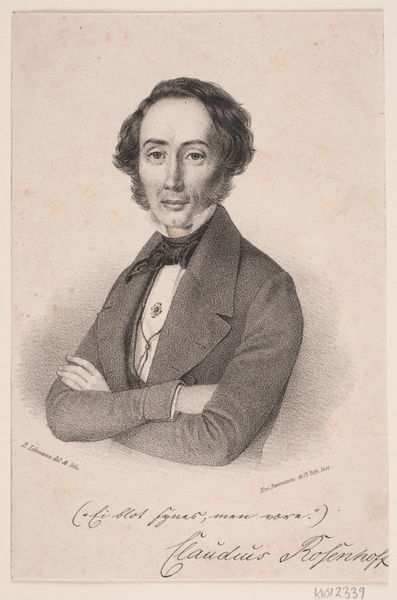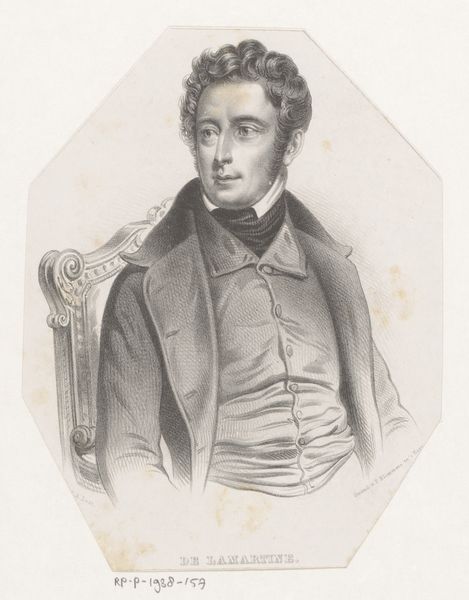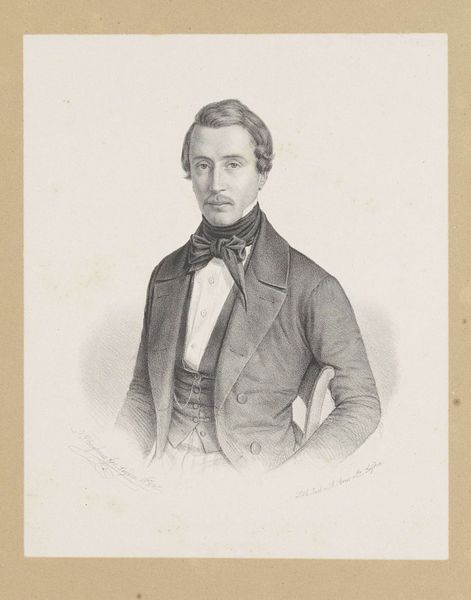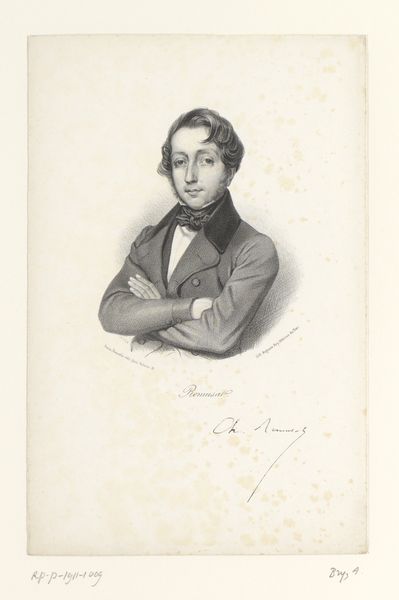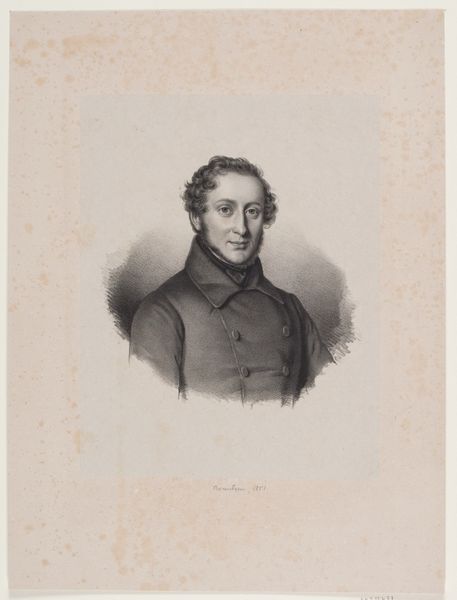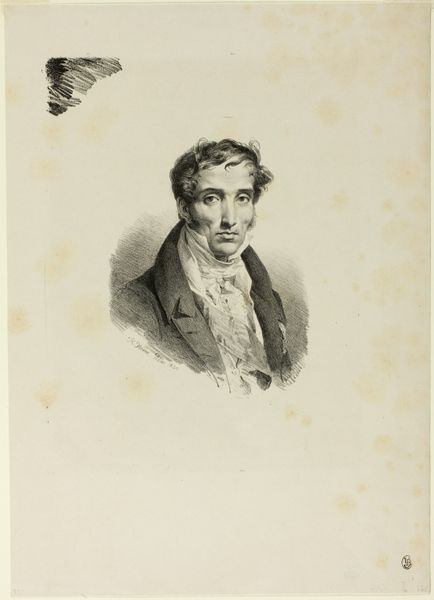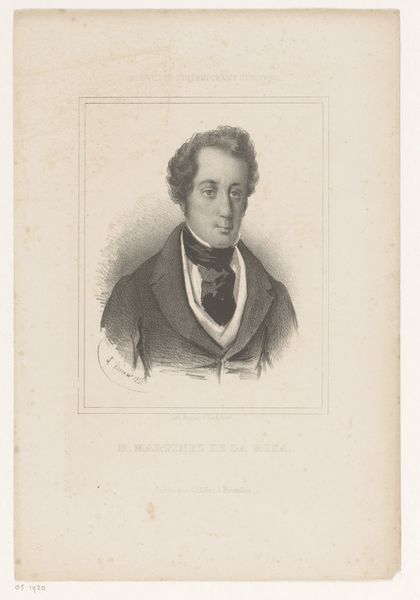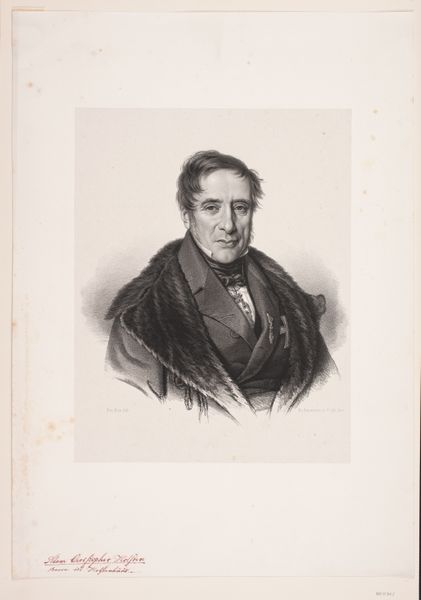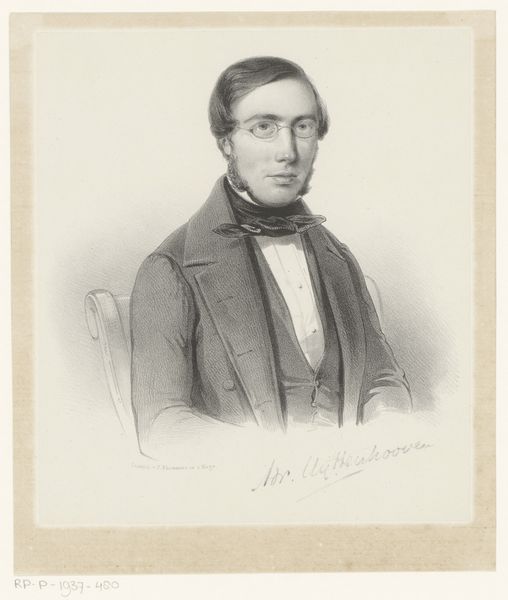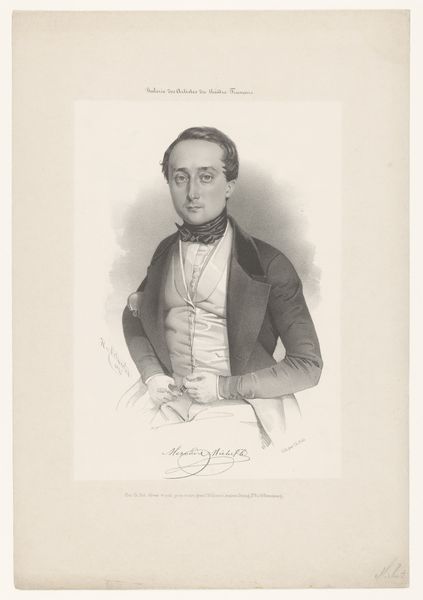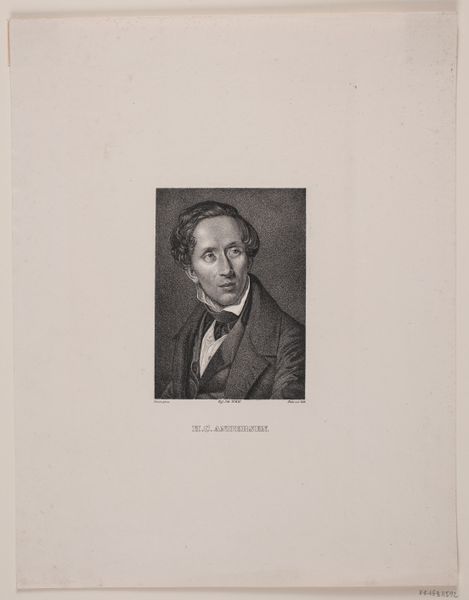
lithograph, print
#
portrait
#
16_19th-century
#
lithograph
# print
#
caricature
#
portrait drawing
#
realism
Dimensions: 461 mm (height) x 318 mm (width) (bladmaal)
Curator: Here we have David Monies' lithograph from 1841, a portrait of Biskop Hans Lassen Martensen, housed at the SMK, Statens Museum for Kunst. Editor: My first impression is of restrained power, almost held back. He appears very young to hold such a title; there is a certain fragility evident. Curator: Well, Martensen was an important figure, not just religiously. This portrait captures him at a time when he was gaining influence in intellectual circles in Copenhagen. These lithographs served a public function, didn’t they, establishing a visual presence for figures in public life? Editor: Absolutely. And it’s crucial to look beyond just his individual likeness here. Think about the church as a socio-political institution. What did Martensen *represent* at that specific historical moment? Were his teachings progressive or conservative for his time? Curator: The artist uses sharp lines and contrasting tones—notice how his face emerges from the shading of his coat and the background. It creates a visual hierarchy; all attention is drawn to Martensen's features. The book, as well, situates him intellectually and theologically. Editor: Exactly. The gaze feels carefully calculated. Is it conveying authority, vulnerability, piety, or perhaps something else? Whose perspective is prioritized in this representation and why? Was this image part of a carefully crafted persona, essential to sustaining power? Curator: Lithography allowed for wider distribution. Prints like these democratized access to images of prominent figures. This enabled more public engagement and allowed people to formulate ideas about this prominent, emerging figure of power in Danish society. Editor: Yes, making these lithographs accessible changed visual culture, for sure. But how did social hierarchies embedded within these visual systems potentially influence perceptions of religious figures and theological authority? Who was consuming them, and with what frameworks were they used to consume? Curator: Thinking about the portrait within its historical context allows us to understand the role of visual imagery in shaping public perception. It is more than a likeness of the Bishop. It represents complex relations and societal influences present in 19th-century Denmark. Editor: Seeing it through a contemporary lens helps us question those power dynamics, revealing how identity is carefully constructed and maintained. Visual codes play a critical role in the maintenance of influence within historical power structures.
Comments
No comments
Be the first to comment and join the conversation on the ultimate creative platform.
